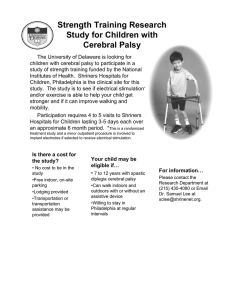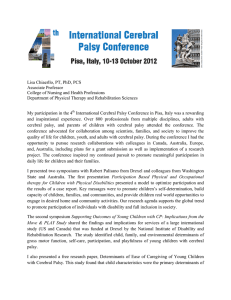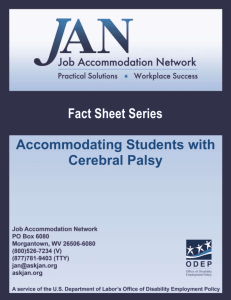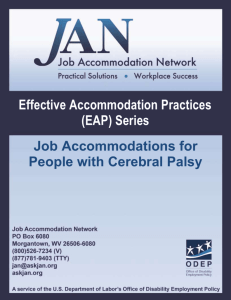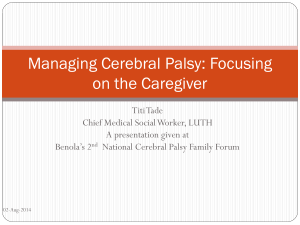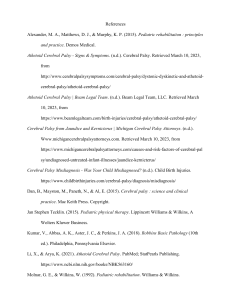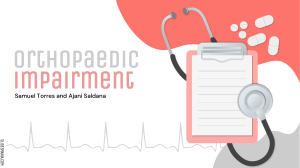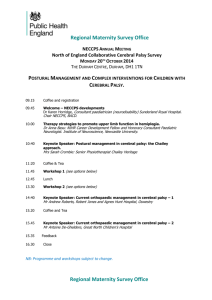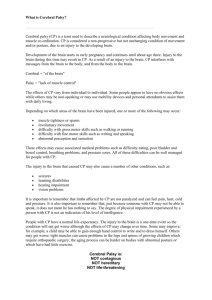Robert Palisano Professor College of Nursing and Health Professions Department of Physical Therapy and
advertisement
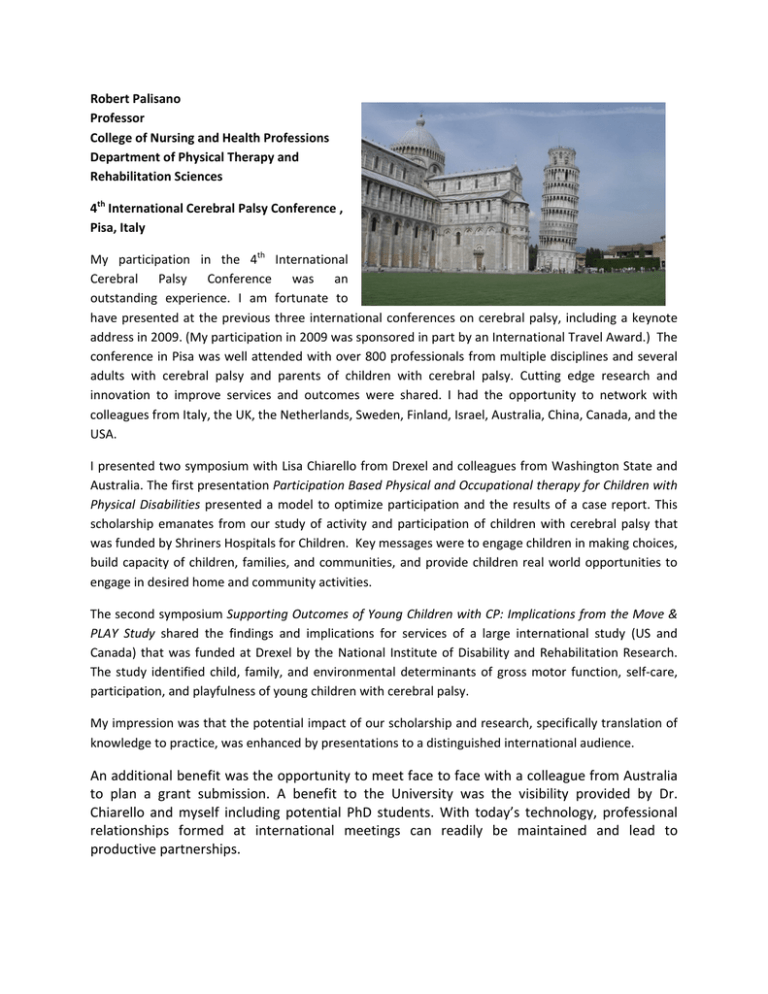
Robert Palisano Professor College of Nursing and Health Professions Department of Physical Therapy and Rehabilitation Sciences 4th International Cerebral Palsy Conference , Pisa, Italy My participation in the 4th International Cerebral Palsy Conference was an outstanding experience. I am fortunate to have presented at the previous three international conferences on cerebral palsy, including a keynote address in 2009. (My participation in 2009 was sponsored in part by an International Travel Award.) The conference in Pisa was well attended with over 800 professionals from multiple disciplines and several adults with cerebral palsy and parents of children with cerebral palsy. Cutting edge research and innovation to improve services and outcomes were shared. I had the opportunity to network with colleagues from Italy, the UK, the Netherlands, Sweden, Finland, Israel, Australia, China, Canada, and the USA. I presented two symposium with Lisa Chiarello from Drexel and colleagues from Washington State and Australia. The first presentation Participation Based Physical and Occupational therapy for Children with Physical Disabilities presented a model to optimize participation and the results of a case report. This scholarship emanates from our study of activity and participation of children with cerebral palsy that was funded by Shriners Hospitals for Children. Key messages were to engage children in making choices, build capacity of children, families, and communities, and provide children real world opportunities to engage in desired home and community activities. The second symposium Supporting Outcomes of Young Children with CP: Implications from the Move & PLAY Study shared the findings and implications for services of a large international study (US and Canada) that was funded at Drexel by the National Institute of Disability and Rehabilitation Research. The study identified child, family, and environmental determinants of gross motor function, self‐care, participation, and playfulness of young children with cerebral palsy. My impression was that the potential impact of our scholarship and research, specifically translation of knowledge to practice, was enhanced by presentations to a distinguished international audience. An additional benefit was the opportunity to meet face to face with a colleague from Australia to plan a grant submission. A benefit to the University was the visibility provided by Dr. Chiarello and myself including potential PhD students. With today’s technology, professional relationships formed at international meetings can readily be maintained and lead to productive partnerships.
